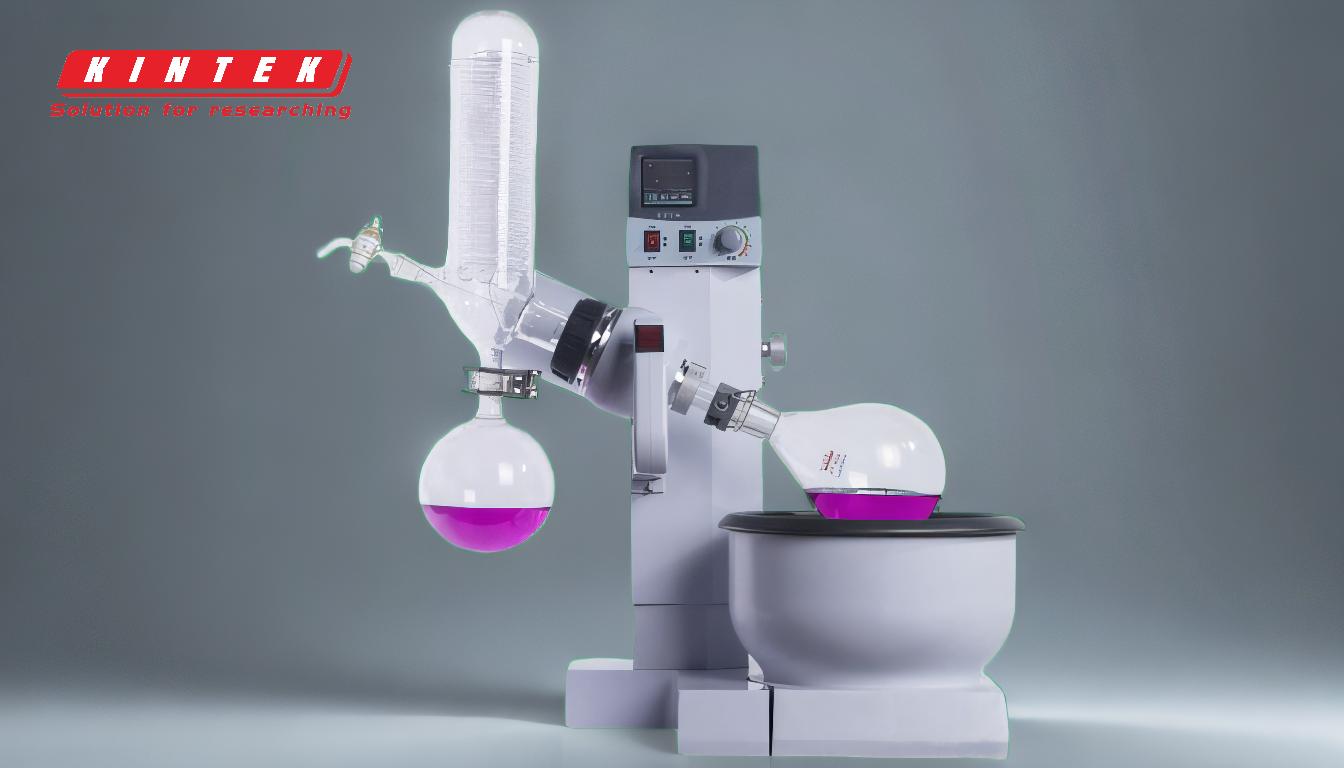Rotary evaporators, while widely used in laboratories for solvent removal and concentration, come with several disadvantages that users should be aware of. These include the potential for sample loss due to bumping, contamination risks, inefficiency with small samples, and the need for frequent maintenance and replacement of parts. Additionally, rotary evaporators can only process one sample at a time, which can be a limitation in high-throughput settings. Understanding these drawbacks can help users mitigate issues and make informed decisions about their use.
Key Points Explained:

-
Sample Loss Due to Bumping
- Bumping is a common issue in rotary evaporation, particularly with mixtures containing ethanol and water. It occurs when the solvent suddenly boils under vacuum conditions, causing the sample to erupt and potentially leading to loss of material.
-
Mitigation Strategies:
- Introduce a homogeneous phase to stabilize the sample.
- Adjust the vacuum strength or bath temperature to control boiling.
- Use additives like boiling chips to promote uniform nucleation during evaporation.
- Employ specialized traps or condenser arrays for difficult sample types.
-
Contamination Risks
- Sample materials are exposed to air during the evaporation process, which can lead to contamination and impurities in the extracted materials.
-
Mitigation Strategies:
- Ensure proper sealing of the apparatus to minimize air exposure.
- Use high-quality glassware and clean it thoroughly between uses to avoid cross-contamination.
-
Single-Sample Processing
- Rotary evaporators can only handle one sample at a time, unlike other distillation methods like short path distillation, which can process multiple samples simultaneously.
-
Implications:
- This limitation can reduce efficiency in high-throughput environments.
- Users may need to invest in multiple units or alternative equipment for parallel processing.
-
Frequent Maintenance and Replacement Costs
- The sealed components of rotary evaporators, such as seals and gaskets, have a limited lifespan and require regular replacement.
-
Implications:
- This increases operational costs and downtime for maintenance.
- Users must budget for ongoing expenses related to equipment upkeep.
-
Slow Evaporation and Inefficiency with Small Samples
- Evaporating high boiling point solvents can be time-consuming, and working with small samples may lead to wasted effort and lost time.
-
Implications:
- Inefficiency in processing small volumes can be a bottleneck in workflows.
- Cross-contamination risks are higher when handling small samples.
-
Challenges with Aromatic Compounds
- Certain aromatics that are balanced in the original liquid may become more pronounced in the precipitate, leading to undesirable tastes or odors in the final product.
-
Implications:
- This can affect the quality of the extracted materials, particularly in applications where flavor or aroma is critical.
-
Annihilation of Substances
- In some cases, the evaporation process can lead to the destruction or alteration of sensitive compounds, particularly in complex mixtures.
-
Implications:
- Users must carefully monitor the process to avoid unintended changes to the sample composition.
By understanding these disadvantages and implementing appropriate mitigation strategies, users can optimize the performance of rotary evaporators and minimize potential issues in their workflows.
Summary Table:
| Disadvantage | Key Challenges | Mitigation Strategies |
|---|---|---|
| Sample Loss Due to Bumping | Sudden boiling causes material loss, especially with ethanol-water mixtures. | Use boiling chips, adjust vacuum/temperature, or employ specialized traps. |
| Contamination Risks | Exposure to air during evaporation can lead to impurities. | Ensure proper sealing and use high-quality, clean glassware. |
| Single-Sample Processing | Only one sample can be processed at a time, reducing throughput. | Invest in multiple units or alternative equipment for parallel processing. |
| Frequent Maintenance Costs | Seals and gaskets require regular replacement, increasing operational costs. | Budget for ongoing maintenance and replacement expenses. |
| Slow Evaporation with Small Samples | Time-consuming for high boiling point solvents; inefficient for small volumes. | Optimize workflow to minimize inefficiencies and cross-contamination risks. |
| Challenges with Aromatic Compounds | Aromatics may become pronounced, affecting final product quality. | Monitor the process carefully to avoid undesirable changes in flavor or aroma. |
| Annihilation of Substances | Sensitive compounds may be destroyed or altered during evaporation. | Carefully monitor and adjust the process to preserve sample integrity. |
Need help optimizing your rotary evaporator setup? Contact our experts today for tailored solutions!











